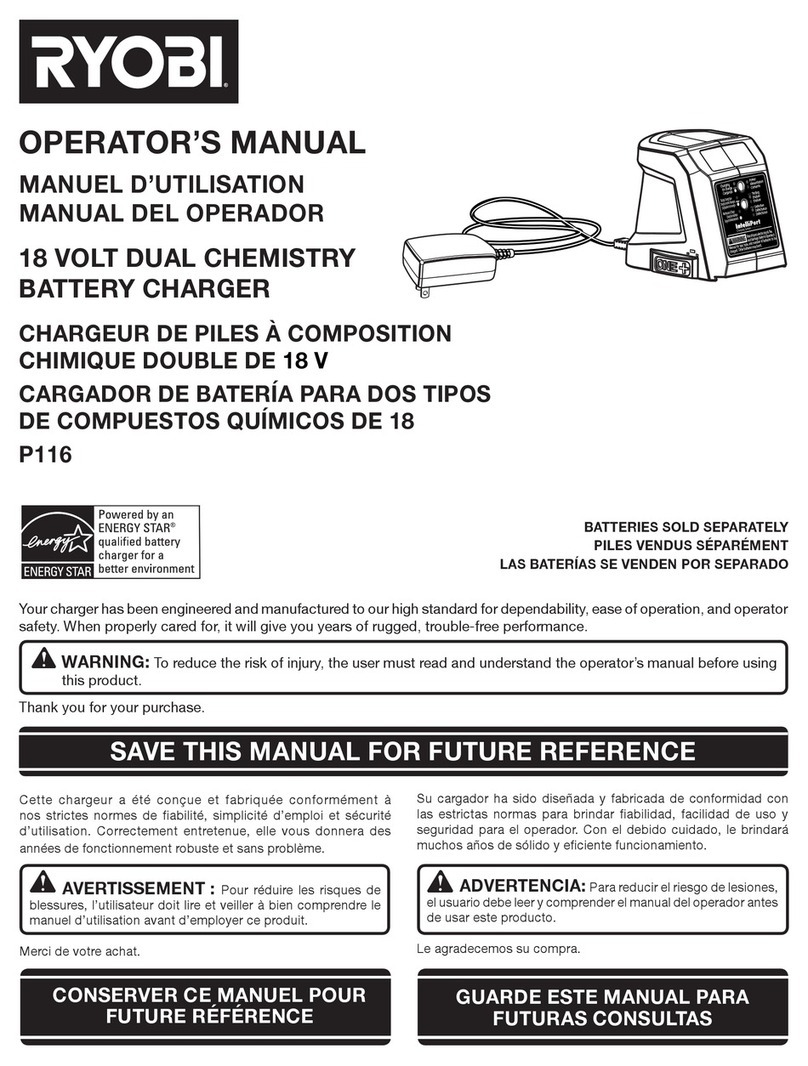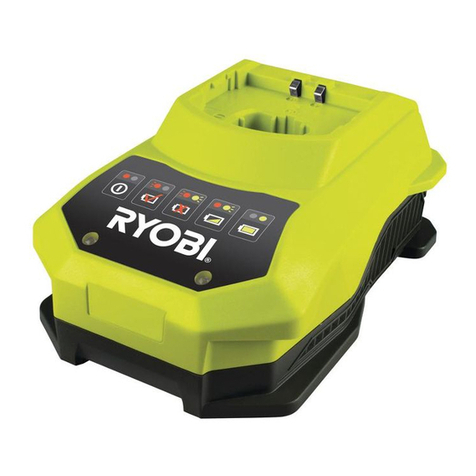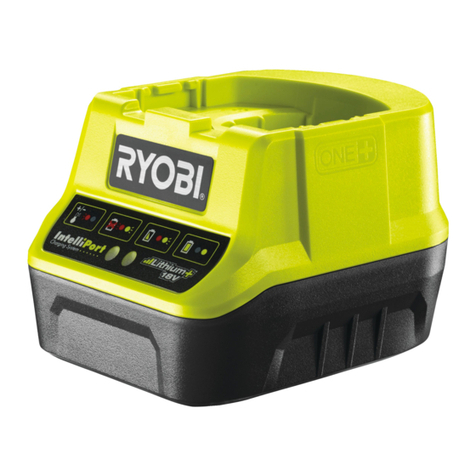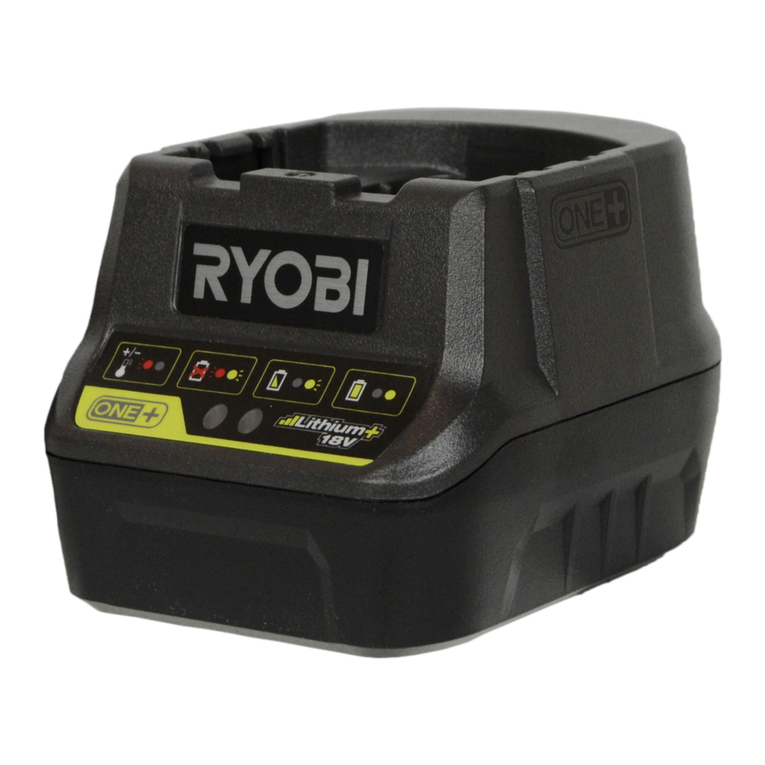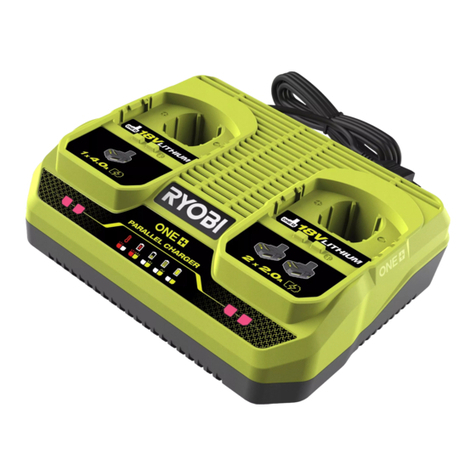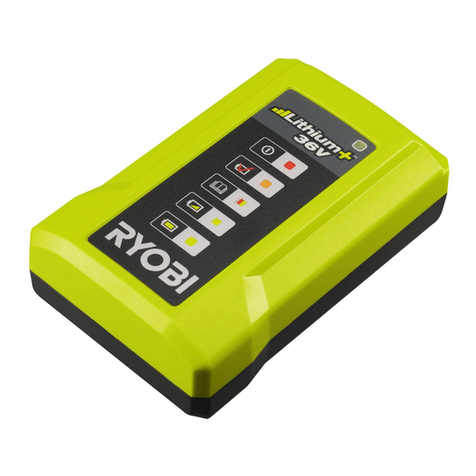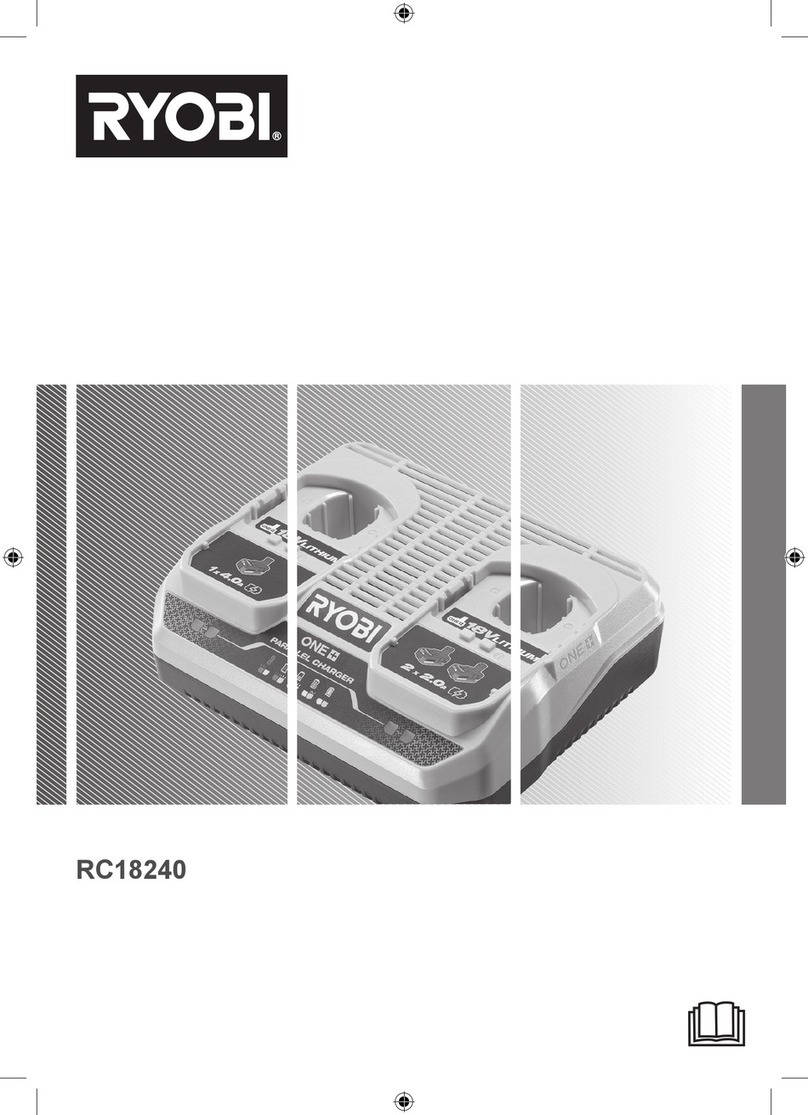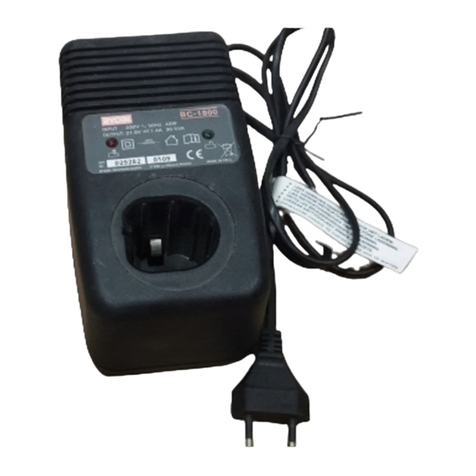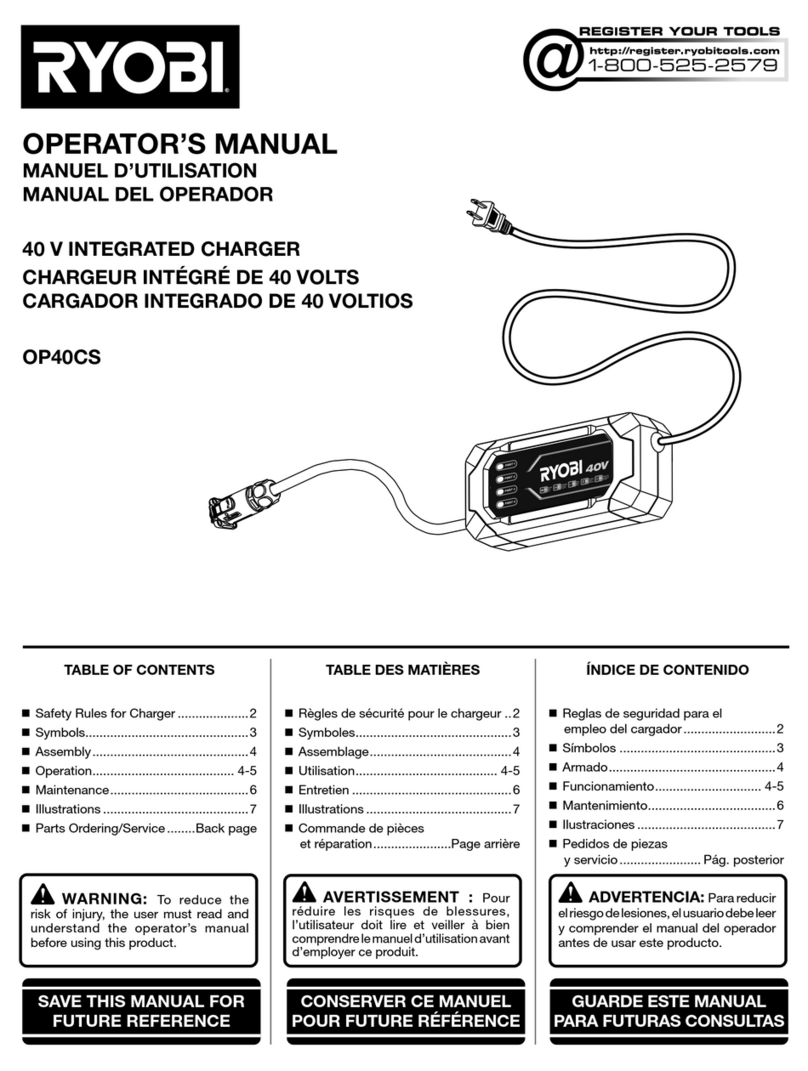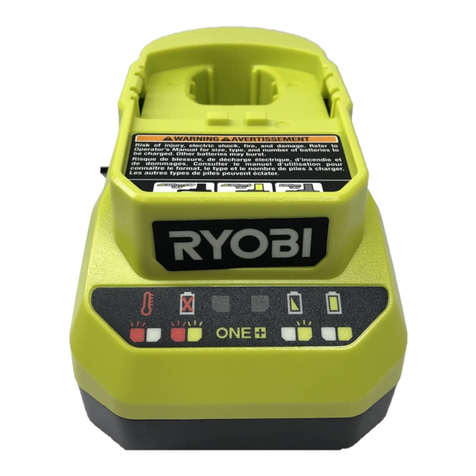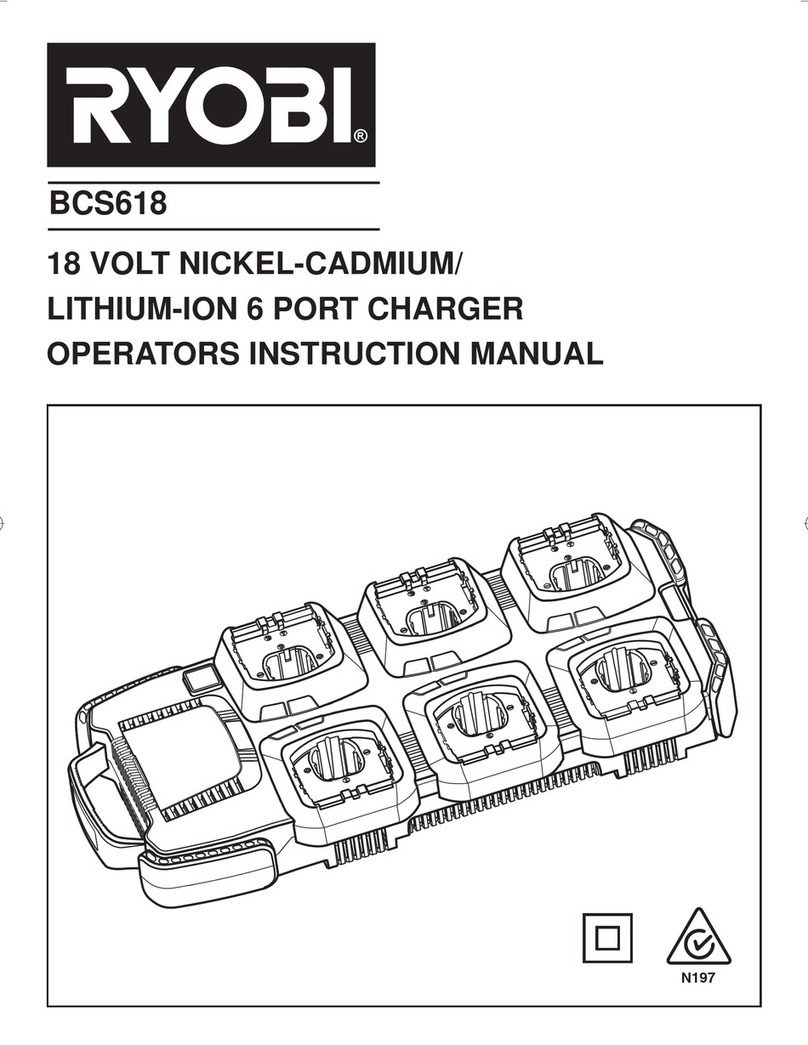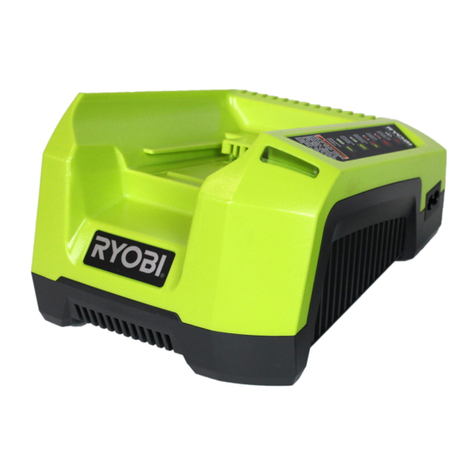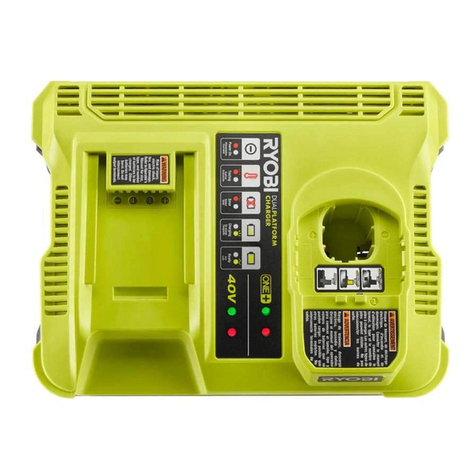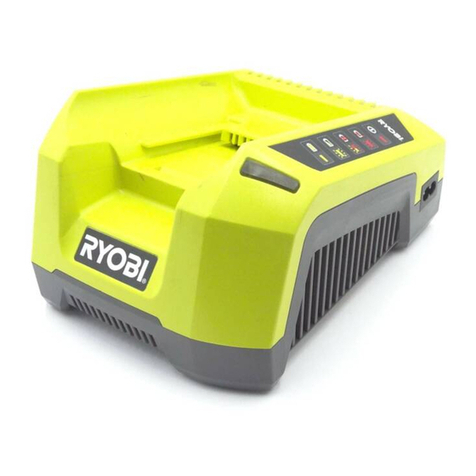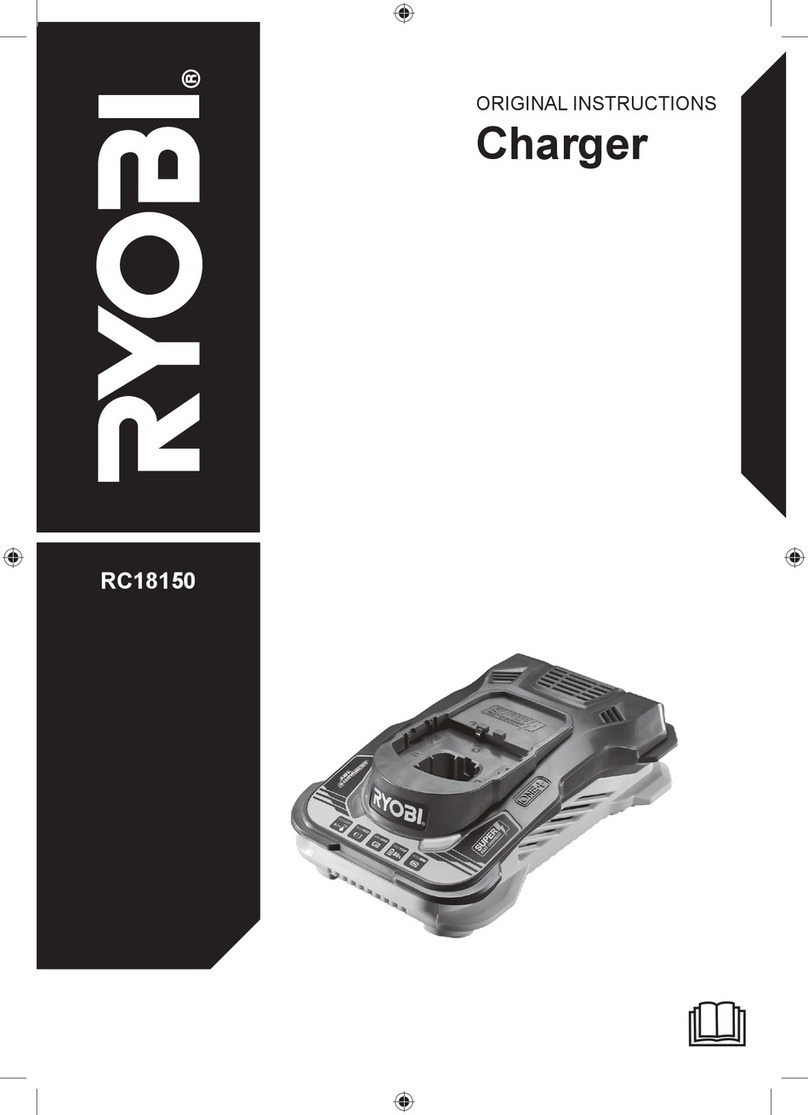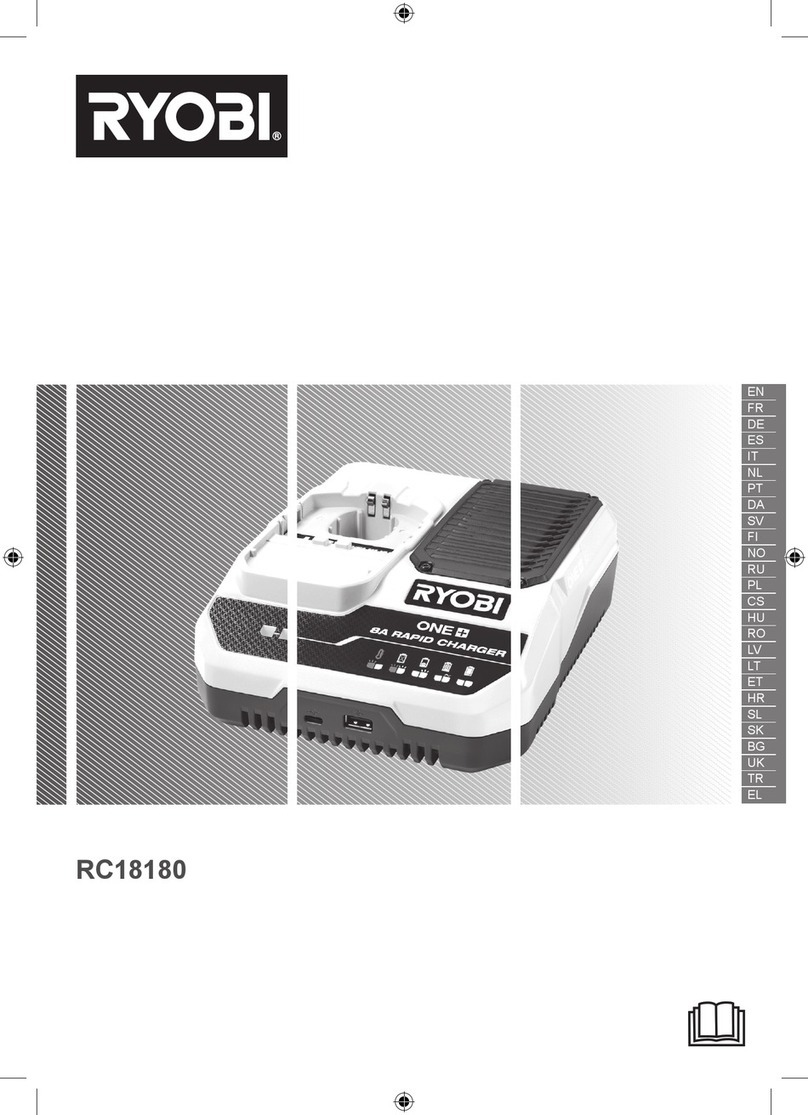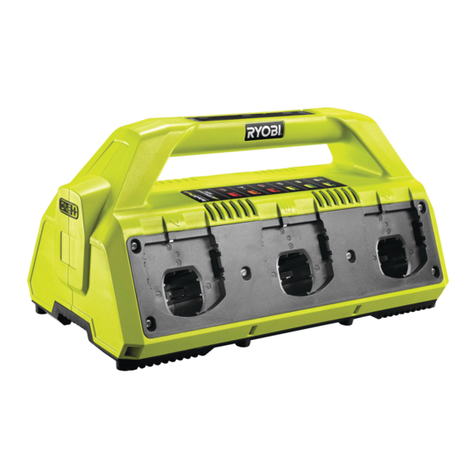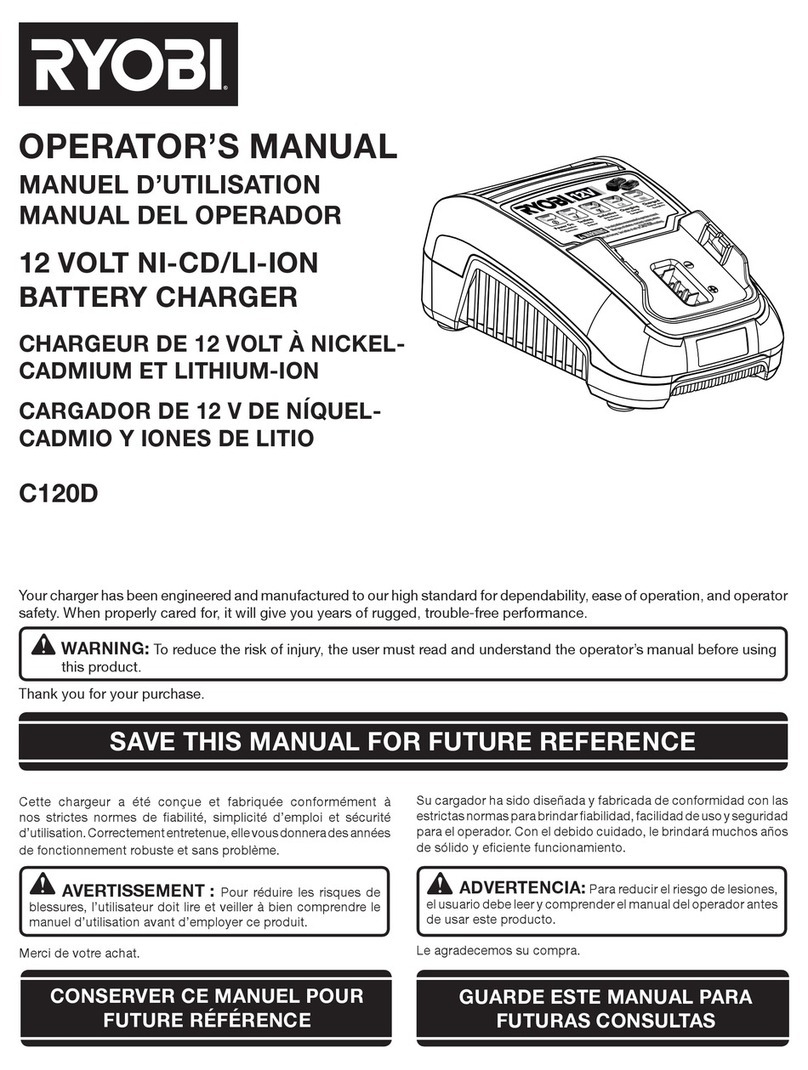
2 — Español
No permita que gasolina, aceites, productos a base de
petróleo, etc., lleguen a tocar las piezas de plástico. Dichos
productos contienen compuestos químicos que pueden dañar,
debilitar o destruir el plástico.
Siempre póngase protección ocular con la marca de
cumplimiento de la norma ANSI Z87.1. La inobservancia de
esta advertencia puede permitir que los objetos lanzados hacia
los ojos puedan provocarle lesiones graves.
No debe emplearse un cordón de extensión a menos que
sea absolutamente necesario. El empleo de un cordón de
extensión inadecuado puede significar un riesgo de incendio
o descarga eléctrica. Si es necesario utilizar un cordón de
extensión, asegúrese:
a. De que las patillas de la clavija del cordón de extensión
vengan en el mismo número, tamaño y forma que las de la
clavija del cargador.
b. Que el cordón de extensión estéalambrado correctamente
y en buenas condiciones eléctricas, y
c. Que el tamaño del alambre sea del tamaño suficiente para
el amperaje de CA nominal del cargador como se especifica
a continuación:
Long. cordón (pies) 25’ 50’ 100’
Calibre cordón (AWG) 16 16 16
NOTA: AWG = Calibre conductores norma americana
No utilice el cargador si está dañado el cordón o la clavija,
ya que podría causar un corto circuito y una descarga eléctrica.
Si está dañada una pieza, un técnico de servicio autorizado
debe reemplazar el cargador.
No utilice el cargador si el mismo ha sufrido una caída,
un golpe sólido o un daño de cualquier tipo. Llévelo a un
técnico de servicio autorizado para una revisión eléctrica y
así determinar si el cargador está en buenas condiciones de
funcionamiento.
No desarme el cargador. Llévelo a un técnico de servicio
autorizado si requiere servicio o una reparación. Si se rearma
la unidad de manera incorrecta, puede presentarse un riesgo
de descarga eléctrica o incendio.
Para reducir el riesgo de una descarga eléctrica, desconecte
el cargador de la toma de corriente antes de iniciar una
tarea de mantenimiento o de limpieza.
Cuando no esté en uso el cargador desconéctelo del
suministro de voltaje. De esta manera se reduce el riesgo
de una descarga eléctrica o daños al cargador si artículos
metálicos caen en la abertura. Esto también ayuda a evitar
dañar el cargador en el caso de una subida de voltaje.
Riesgo de descarga eléctrica. No toque ninguna parte sin
aislar del conector de salida, ni ninguna terminal de las baterías
en tales condiciones.
Guarde estas instrucciones. Consúltelas con frecuencia y
empléelas para instruir a otras personas que puedan utilizar
esta herramienta. Si presta a alguien esta herramienta, facilítele
también las instrucciones con el fin de evitar un uso indebido
del producto y posibles lesiones.
REGLAS DE SEGURIDAD PARA EL EMPLEO DEL CARGADOR
¡ADVERTENCIA!
LEA Y COMPRENDA TODAS LAS INSTRUCCIONES. El
incumplimiento de las instrucciones señaladas abajo puede
causar descargas eléctricas, incendios y lesiones serias.
Antes de emplear el cargador de baterías, lea todas las
instrucciones y las marcas precautorias del manual, del
cargador, de la batería y del producto con el cual se utiliza dicha
batería, con el fin de evitar un empleo indebido del producto y
posibles lesiones corporales o daños físicos.
ADVERTENCIA:
Cargue sólo una batería recargable de iones de litio a la vez.
Los otros tipos de baterías pueden explotar y ocasionar daños
y lesiones corporales. Para obtener paquetes de baterías
compatibles, consulte el complemento de correlación de
herramienta/artefacto/paquete de batería/cargador 987000-432.
No utilice el cargador a la intemperie ni lo exponga a
condiciones húmedas o mojadas. La introducción de agua
en el cargador aumenta el riesgo de una descarga eléctrica.
ADVERTENCIA:
No cargue una batería húmeda o que haya estado húmeda o
expuesta a líquidos.
El uso de un accesorio no recomendado o vendido por
el fabricante del cargador de baterías puede significar
un riesgo de incendio, descarga eléctrica o lesiones
corporales. Con el cumplimiento de esta regla se reduce el
riesgo de una descarga eléctrica, incendio o lesión seria.
No cargue la batería en lugares mojados o húmedos. No lo
utilice, guarde o cargue la paquete de baterías o la unidad
en lugares donde la temperatura sea inferior a 10 °C (50 °F) o
superior a 38 °C (100 °F). No guarde la herramienta a la intemperie
ni en el interior de vehículos.
No maltrate el cordón eléctrico ni el cargador. Para trasladar
el cargador nunca lo sostenga del cordón. No tire del cordón
del cargador en lugar de tirar de la clavija al desconectar el
aparato de la toma de corriente. Puede dañar el cordón o el
cargador y causar un peligro de descarga eléctrica. Si el cable
o el cargador está dañado, llévelo a un técnico autorizado para
que lo reemplace.
Asegúrese de que el cordón eléctrico esté ubicado de tal
manera que nadie lo pise o se tropiece con él, no toque
bordes afilados o piezas en movimiento ni quede sujeto a
daños ni tensiones. De esta manera se reduce el riesgo de
caídas accidentales que pudieran causar lesiones personales y
daños al cordón, lo cual podría ocasionar una descarga eléctrica.
Mantenga el cordón y el cargador alejados del calor para
evitar dañar el alojamiento o las partes internas de la unidad.
INSTRUCCIONES DE SEGURIDAD IMPORTANTES
1.
GUARDE ESTAS INSTRUCCIONES - PELIGRO: PARA REDUCIR EL RIESGO DE INCENDIOS
O DESCARGA ELÉCTRICA, SIGA CUIDADOSAMENTE ESTAS INSTRUCCIONES.
Este manual contiene instrucciones importantes respecto a la seguridad y funcionamiento de los cargador de baterías P118B.
2. Antes de emplear el cargador de baterías lea todas las instrucciones y las indicaciones precautorias del cargador de baterías, de
las baterías y del producto con el que se utilizan las baterías.
3. PRECAUCIÓN: Para reducir el riesgo de lesiones, sólo cargue baterías recargables de iones de litio. Otros tipos de
baterías pueden estallar y causar lesiones corporales así como daños materiales.
